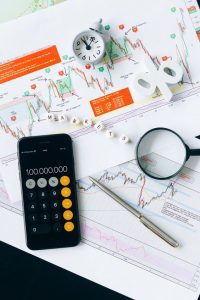In the dynamic world of forex trading, where currencies fluctuate by the minute, having a comprehensive understanding of charting techniques is imperative. Advanced charting techniques empower traders to interpret market movements, identify trends, and make informed decisions. In this article, we delve into some advanced forex robot charting techniques that can enhance your forex trading analysis.
Candlestick Patterns:
Candlestick patterns are among the most widely used tools in forex trading analysis. They provide valuable insights into market sentiment and help traders anticipate potential price movements. While basic candlestick patterns like doji, engulfing, and hammer are well-known, advanced patterns such as the three black crows, evening star, and abandoned baby offer deeper insights into market dynamics. By mastering these patterns, traders can identify trend reversals, continuation patterns, and potential breakout opportunities.
Fibonacci Retracement:
Fibonacci retracement is a powerful tool for identifying potential support and resistance levels in forex trading. Based on the Fibonacci sequence, this technique involves plotting horizontal lines at key Fibonacci ratios (23.6%, 38.2%, 50%, 61.8%, and 100%) on a price chart. Traders use these levels to identify areas where price corrections are likely to occur within the context of an overall trend. By combining Fibonacci retracement with other technical indicators, traders can pinpoint optimal entry and exit points with greater precision.
Ichimoku Cloud:
The Ichimoku Cloud, also known as Ichimoku Kinko Hyo, is a comprehensive indicator that provides insights into trend direction, momentum, and support/resistance levels. Consisting of five lines that plot various aspects of price action, including the Tenkan-sen, Kijun-sen, Senkou Span A and B, and Chikou Span, the Ichimoku Cloud offers a holistic view of market dynamics. Traders can use this indicator to confirm trend direction, identify potential entry and exit points, and assess the overall strength of a trend.
Volume Analysis:
Volume analysis is a critical component of forex trading analysis, as it provides valuable insights into market participation and sentiment. By analyzing volume patterns alongside price movements, traders can confirm the validity of trends and anticipate potential reversals. Volume indicators such as the On-Balance Volume (OBV), Accumulation/Distribution Line, and Volume Weighted Average Price (VWAP) can help traders gauge the strength of buying and selling pressure in the market.
Harmonic Patterns:
Harmonic patterns are advanced charting techniques that identify potential reversal points based on geometric price patterns. Popular harmonic patterns include the Gartley, Butterfly, Bat, and Crab patterns, which are derived from Fibonacci ratios and specific price movements. By recognizing these patterns, traders can anticipate trend reversals with a high degree of accuracy and position themselves accordingly. Harmonic patterns are particularly effective when combined with other technical indicators and price action analysis.
Renko Charts:
Renko charts are a unique charting technique that filters out minor price fluctuations and focuses on significant price movements. Instead of using fixed time intervals, Renko charts plot bricks (or “boxes”) based on price movements of a predetermined magnitude. This approach eliminates noise from the price chart and provides a clearer picture of trend direction and momentum. Renko charts are especially useful for identifying trends and trend reversals in volatile forex markets.
Conclusion:
Advanced charting techniques play a vital role in forex trading analysis, enabling traders to navigate complex market dynamics with confidence. By mastering candlestick patterns, Fibonacci retracement, Ichimoku Cloud, volume analysis, harmonic patterns, and Renko charts, traders can gain deeper insights into price action, identify high-probability trading opportunities, and improve their overall trading performance. While these techniques require time and practice to master, the investment is well worth it for traders seeking to gain a competitive edge in the forex market.





